Orchids are among the most exquisite and delicate flowers, cherished by gardeners and plant enthusiasts alike for their diverse and vibrant blooms. However, ensuring that these captivating plants thrive requires a careful approach to their nutritional needs. In this blog, we will explore the best natural organic fertilizers available for orchids, providing insights into what makes these fertilizers beneficial and how to effectively use them to promote healthy growth and stunning floral displays. Whether you’re a seasoned orchid grower or a beginner looking to nurture your first plant, this guide will offer valuable tips and recommendations to help your orchids flourish.
Why Do Orchids Need Fertilizer?
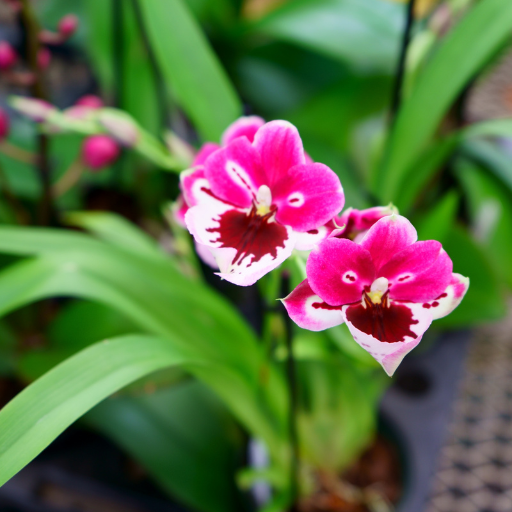
Orchid Nutrition and Growth
As all plants do, orchids need a mix of nutrients that is not imbalanced in order to develop well or produce beautiful flowers. Orchids grow on trees in the wild unlike other garden plants and obtain their nutrients primarily from organic matter and rainwater. Orchid’s main macro-nutritional requirements include: nitrogen (N) for leaf and stem growth, phosphorus (P) for root development and blooming, potassium (K) for overall plant health and disease resistance; also they benefit from micronutrients such as calcium, magnesium, iron etc. Since the potting media commonly used for growing these plants such as barks or sphagnum moses are usually deficient of these vital nutrients it is essential to provide additional fertilization to simulate their natural feeding habitat hence enabling strong growth.
The Role of Fertilizer in Orchid Bloom and Health
Nutrient deficiencies often occur in orchid’s potting media which can be corrected by adding fertilizers that promote general wellness as well as stunning blooms. Proper use of fertilizer can dramatically improve orchid care, resulting in a more robust root system, healthy leaves, good foliage growth, more flowers, and long-lasting blooms. Normally a “balanced” fertilizer with equal parts of N-P-K that is specifically formulated for orchids will be recommended These ensure strong roots are developed among the plant while still vibrant blossoms appear on them Micronutrients like iron served by specialized orchid fertilizers also provide healthier leaves along with disease resistance. It is important not only to follow regular feeding schedules but also dilute fertilizer to avoid salt buildups around pots thus mimicking orchids’ natural nutrient intake via decaying organic matter supplemented by rainfall in native habitats.
Understanding Orchid Needs in Different Growing Conditions
There are different growing conditions under which orchids thrive including temperature variations as well light needs together with humidity preferences.
Temperature:
- Cool-Growing Orchids: These orchids develop well in 50-70°F (10-21°C) temperatures. They include Masdevallia and Cymbidium species.
- Intermediate-Growing Orchids: They grow better in between 55-80°F (13-27°C). Examples are Miltonia and Paphiopedilum species.
- Warm-Growing Orchids: These orchids do best when the temperature ranges from 60-85°F (15-29°C). Some of them are Vanda or Phalaenopsis.
Light:
- Low Light: For example, Phalaenopsis requires about 1,000 to 1,500 foot-candles. They can be kept under shade as well as indirect sunlight
- Medium Light: Dendrobium and Oncidium orchids require around 1,500 to 3,000 foot-candles. Bright but indirect light is good for them.
- High Light: Cattleya and Vanda orchids need between 3,000 and 5,000 foot candles. To avoid scorching of leaves they should receive bright filtered light
Humidity:
- Typical humidity levels for most orchids range between 40 to 70%.
- Optimal conditions can be achieved through trays with water or use of room humidifiers especially where there are dry climates or heated indoor air.
Watering:
- The frequency of watering depends on the type of potting media used as well as the kind of orchid you have. Water when medium has almost dried out but it does not become too dry e.g., every five to twelve days is a general guideline.
- It’s important to offer chlorine-free/salt free water because these elements are very harmful for this plant type
Air Circulation:
- Proper air circulation is vital in order to prevent fungal or bacterial infections; small fans within homes can help achieve this, alternatively moving them towards doors and windows may provide fresh air.
Adhering to these parameters of temperature, light, humidity, watering and air circulation will help you create the best conditions for growing different orchid species hence making them robust and beautiful.
What Types of Fertilizer Are Best for Orchids?
Choice of the Best Organic Fertilizer
To choose the best natural fertilizer for an orchid, one has to understand its unique nutritional requirements. Most orchids thrive with balanced fertilizers, such as which include nitrogen (N), phosphorous (P) and potassium (K) in equal proportions. Examples of these organic options are fish emulsion, seaweed extracts or compost tea that provide essential nutrients without chemical accumulations. Fish emulsion is a rich source of nitrogen whereas seaweed extract promotes root development and general plant healthiness. Compost tea provides an unending supply of nutrients as well as beneficial microbes. It is wise to adhere to dilution rates and application intervals per recommendations when using those eco-friendly fertilizers i.e., every forth night during the active growth phase and less often when not growing.
Balanced Fertilizer vs Inorganic Fertilizer
Balanced fertilisers and inorganic fertilisers have their own roles in maintaining healthy orchid plants but they differ greatly in composition and effects. Balanced fertility mostly contains equal proportionates of N-P-K, providing broad-spectrum nutrient profiles. They can be organic or inorganic – organic balanced fertilizers are often made up from natural ingredients like fish emulsion and kelp extract thus promoting sustainable agriculture practices.
On the other hand, frequently synthetic components of sometimes synthetic are usually offered by inorganic fertilizer in a form that can be readily taken up by plants thereby ensuring fast absorption . These types of fertilizers often have accurate nutrient ratios specific to plant needs which facilitate managing precise growth stages or deficiencies better among others. However, the quick availability carries higher risks for over-fertilization alongside salt build-up inside the media.
The final selection between balanced and non-organic fertilizers depends on what you are going after with your orchid growing venture including environmental issues involved.- Organic balance supports the long term soil health while being environment friendly however; non-organic ones give instantaneous results and have a precise control over nutrient uptake. Many growers find a combination of both helpful, using inorganic fertilizers to provide immediate nutrients during the growing period and balanced organics to maintain a healthy and sustainable environment.
Comparing Various Types of Orchid Fertilizers
Top preferences for orchid fertilizers are made considering different slow-release, water-soluble and time-release nutrients which have unique advantages.
- Slow-Release Fertilizers: These fertilizers gradually decompose resulting in a steady release of nutrients over several months. This allows for an even supply of nutrients, while reducing the risk of over-applying fertilizer or the need to apply it frequently. They are particularly good for people who don’t want too much involvement in their plants as they take little time maintaining them.
- Water-Soluble Fertilizers: Water soluble fertilizers dissolve readily in water thus making available immediate nutrient for plant usage. It is also used where specific deficiency diseases require an urgent attention or when rapid development phase is executed to orchids. But regular applications should be done if nutrient levels must remain constant and there is high probability that if not correctly applied this can lead to leaching out of these substances hence burning the roots.
- Time-Release Fertilizers: Time release fertilizers are similar to slow release but are designed not only as long lasting but also with feed intervals controlled by temperature, moisture etc. Such predictable release-rate systems can be particularly useful in providing consistent nutrition to orchids without having to worry about refilling times for fertilizing agents. This makes them convenient and efficient types of fertilisers recommended for all grower levels.
Generally speaking, the type of fertilizer you choose for orchids depends on your maintenance preferences and cultivation goals. Slow-release fertilizers on the other hand are easy to use and offer a longer lasting supply of nutrients in the soil while water-soluble options provide an immediate, targeted feeding. Time-release fertilizers also take effort to release nutrients thus ensuring that one does not need to apply them frequently. Using these fertilizers smartly together can result in healthy orchids with beautiful blooms.
How to Apply Fertilizer to Orchids?
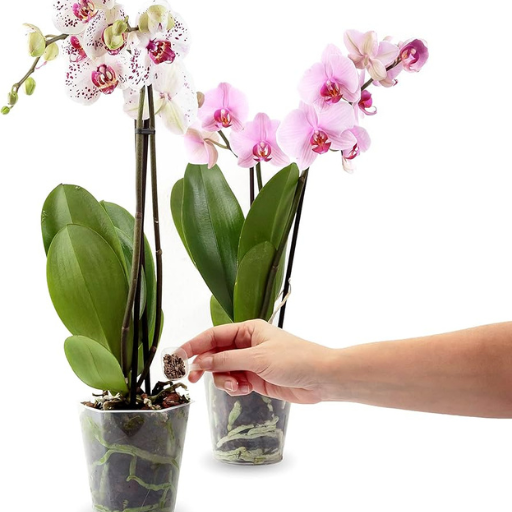
Steps to Fertilize Your Orchid
- Select the Right Fertilizer: Select either orchid-specific or balanced fertilizer (20-20-20). Half or quarter its recommended strength to prevent excessive input of nutrients.
- Prepare the Solution: Add fertilizer to room temperature water according to dilution rates. For water-soluble fertilizers, this will ensure that the plant has immediate access to nutrients and thus reduces the risk of root burn.
- Water Before Fertilizing: Water your orchid thoroughly before applying fertilizer. This will avert a burn from fertilizer as roots are already moist and reduce nutrient concentration.
- Apply the Fertilizer: Pour the diluted fertilizer solution onto the orchid’s potting medium uniformly such that it reaches the roots but does not soak leaves hence leading injury prevention.
- Use a Regular Schedule: In Spring and summer, plants should be fed every two weeks and during fall or winter time they can be feed once in every month, depending on what is necessary for them to grow properly.
- Monitor for Nutrient Needs: Watch out for signs of growth in your orchid and adjust accordingly. If you see yellow leaves or stunted growth this could mean there is too much nutrition or there may be not enough present.
By following these steps, you can give your orchids adequate nourishment that they require for healthy development and blooming.
How to Dilute Fertilizer Correctly
To dilute fertilizer correctly is important so as not to damage your orchids through excess amount. The following are brief steps based on common practices:
- Read the Instructions: Always begin by reading carefully what’s written on the package of your fertilizer so as know how much you need to mix with water and apply in optimal use.
- Measure the Fertilizer: Weighing spoon helps in measuring out small amounts of fertilizers. Majority of orchid fertilizers have 1 teaspoon per gallon water ratio although it might vary sometimes depending on the fertilizer.
- Mix with Water: Add the measured amount of fertilizer to room-temperature water in a container. Thoroughly stir until all particles are dissolved.
- Check the Dilution: It is generally best for orchids if one uses a more diluted solution than recommended for other plants. As a good rule, it is always useful to dilute down to half or even to quarter strength of that reccomended by the label. For instance, with orchids, only use 1/4 teaspoon per gallon if the bottle says 1 teaspoon per gallon.
- Store Unused Solution Properly: If you make extra fertilizer beyond what is necessary for your use, keep it in well-sealed containers and put them preferably in cool dark places which will maintain their efficacy till next application period.
By following these steps, you can be sure that you are providing your orchids with just enough food they need to grow healthy and strong.
Fertilizing Orchids: How Often Should I Do It?
Orchid fertilization should be done with caution so as not to overfeed them while also ensuring that they are receiving enough nutrients for optimal growth. Most sources recommend fertilizing orchids every one to two weeks during the growing season (spring and summer) and reducing it to once a month during the dormant period (fall and winter). A commonly recommended approach is “weakly, weekly;” i.e., dilute the fertilizer by half or even a quarter of the recommended strength and use it each week. Through this way, plants have their supply of nutrients maintained without being overwhelmed. In addition, always remember to leach the pot of your orchid using plain water once in thirty days so as to prevent any salt build up caused by fertilizers.. By adjusting the frequency and dilution according to your orchid’s specific needs, you can promote healthy and sustained growth throughout the year.
What Are the Nutrient Requirements of Orchids?
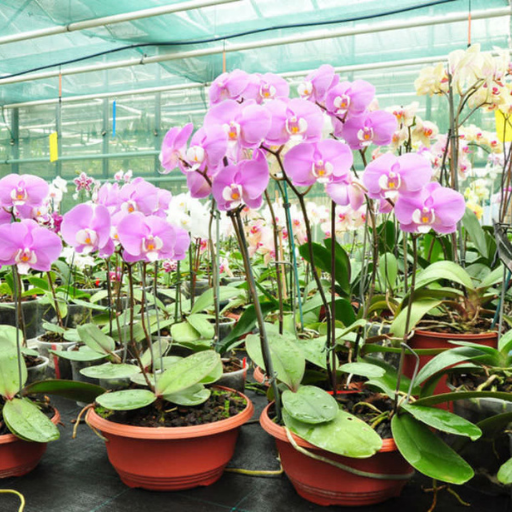
Nitrogen, Phosphorus, Potassium and Orchid Fertilizers
For orchids to thrive they require a well-balanced blend of nutrients with special attention to nitrogen (N), phosphorus (P) and potassium (K). Nitrogen is fundamental in promoting healthy leaf and stem development that is very essential for the plant’s overall health. Phosphorus supports good root growth and enhances blooming, making it crucial during the flowering stage. Lastly, potassium improves overall plant health by boosting disease resistance as well as enabling plants to endure stresses from environment. A balanced orchid fertilizer usually indicated by N-P-K ratio ensures that these elements are supplied in the right proportions needed for proper growth of orchids. Thus, regular but careful application through “weakly weekly” approach helps maintain a steady supply of these vital nutrients resulting into healthy and vibrant orchids over their life span.
The Importance of Calcium and Micronutrients
Calcium is necessary for stabilizing cell walls during cell growth ad division among orchids. It helps in strengthening plant structure so that the roots can become robust while leaves develop properly in an orchid. Other important micronutrients include magnesium which forms part of chlorophyll as well as being central during photosynthesis process while iron promotes the synthesis of enzymes plus chlorophyll itself. Besides, trace elements like manganese, zinc, copper and boron have major functions in various physiological processes including enzyme activities hormone production and formation of new cells too. For this reason a sufficient amount these micro-nutrients help improve general healthiness as well as longevity among orchards hence they can productively live under diverse conditions.
Using Fertilizer That Contains Essential Nutrients
When choosing an orchid fertilizer it is important to make sure that it contains an appropriate mixture of essential ingredients such as nitrogen, phosphorous , potassium , calcium , sulfur , magnesium , boron or iron . The most widely recommended fertilizers are those which come with N-P-K ratios of 20-20-20, 30-10-10 and they should be used following the rule ‘weakly, weekly’ because over-fertilization can happen. In addition, a water-based fertilizer is more easily taken in by orchids. The Spruce, Gardening Know How and American Orchid Society recommend inclusion of these vital elements to encourage strong growth and colorful blooms that reflect the overall well-being of an orchid plant.
Common Mistakes When Using Orchid Fertilizer
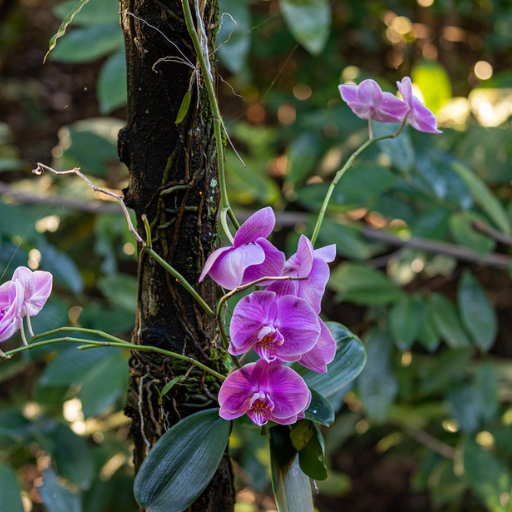
Identifying Over-Fertilization in Orchids
In my experience, identifying over-fertilization in orchids entails looking for specific signs that indicate nutrient excess. Among the common symptoms are leaf-burns, yellow or brown tips of leaves as well as a whitish crust on the surface of the potting medium due to accumulative salts. Orchids that are too fertile may also show retarded growth, wilting or overall poor health. One way to solve this problem is by flushing plain water through the potting medium to remove any excess nutrients. Consistently following the “weakly, weekly” rule and using diluted fertilizer can prevent and cure such problems for my healthy and prosperous orchids.
Avoiding Fertilizer Burn on Orchid Roots
For me to escape from burning the roots of my orchids with fertilizers I ensure I use a weak solution of fertilizers. By sticking to “weakly, weekly” rule I ensure that I don’t overload with nutrients as a means of growing them. Also important is pouring water through the soil about once every month so as to remove any salts accumulation which can harm root development. In addition, I always select a fertilizer which dissolves in water only then apply it directly into its roots avoiding leaves and flowers so as not to cause damage. Thus, this cautious approach enables me maintain thriving plants without risk of burns resulting from manure.
Reading and Understanding Fertilizer Labels
When reading and understanding fertilizer labels there are several major factors that guide me towards ensuring proper nutrients given my orchids.Firstly,I check for what N-P-K ratio;that is percentage per nitrogen(N),phosphorous(P)and potassium(K)in the manure.These three macronutrients do play vital role in plant growth whereby nitrogen helps in leaf development while phosphorus supports root/bloom development and finally potassium enhances overall plant health conditions.
Next, there may be other micro-nutrients like calcium, magnesium and iron that are critical to good orchid development. I always pick a balanced fertilizer which contains these elements. To avoid over fertilizing my orchids, I read the dilution rates and application frequency on the label. Moreover, if the product is water-soluble as stipulated on the package, then it should be easy for me to know that it will dissolve completely and get absorbed by the root system.
Consequently,I can make conscious choices on which manure to buy that can ensure supply of appropriate nutrients in suitable proportions through analysing these constituents and instructions. This accuracy helps me keep my orchids healthy and blooming beautifully.
Frequently Asked Questions (FAQs)
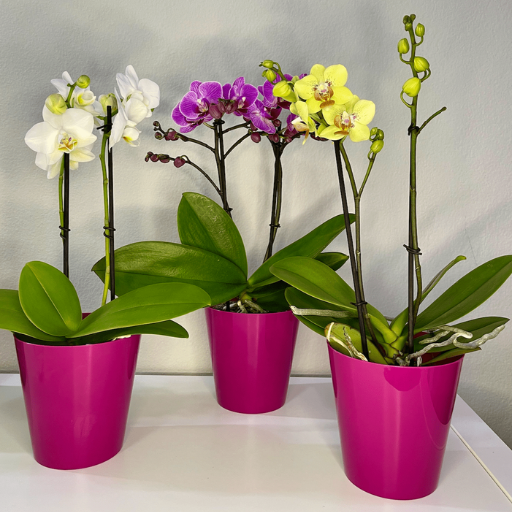
Q: What is the best orchid fertilizer to use?
A: The best orchid fertilizer is one that is specially formulated for orchids, taking into consideration the particularities of your variety of orchid. A balanced orchid fertilizer is perfect for many different kinds of these plants.
Q: How often should I fertilize my orchid plants?
A: Orchids generally require less fertilizer as compared to other plants. It’s recommended that you use a fertilizer for your orchids once every month during growing season. Always observe instructions on the composition of fertilizers to avoid over-fertilizing.
Q: Can I use organic fertilizer on my orchids?
A: Definitely, you can use organic manure in your flowers. Organic manured flowers can thrive if its formula meets the specific needs of your flowers. Always go for organic manures specifically made for growing them in order to achieve good results.
Q: What is a balanced orchid fertilizer?
A: A balanced orchid food usually consists of equal parts nitrogen, phosphorous and potassium (often represented as 20-20-20). This kind of plant food will aid in keeping an all-round growth in your flower thus ensuring that it gets all the nutrients needed by it.
Q: How should I apply fertilizer to my orchids?
A: Before applying fertilizers, ensure that you watered this type of a flower well. After this, mix some portion of the given dressing according to directions and pour it into soil. This stops root burn and helps effective absorption nutrients.
Q: What should I consider when choosing a natural organic fertilizer for orchids?
A: When selecting natural organic manure for their planting culture, choose those products that mimics constituents found within natural habitat of such species. It must be noted that the dressing should be well-balanced and tailored towards satisfying requirements peculiar to particular kinds of these beautiful flowers.






